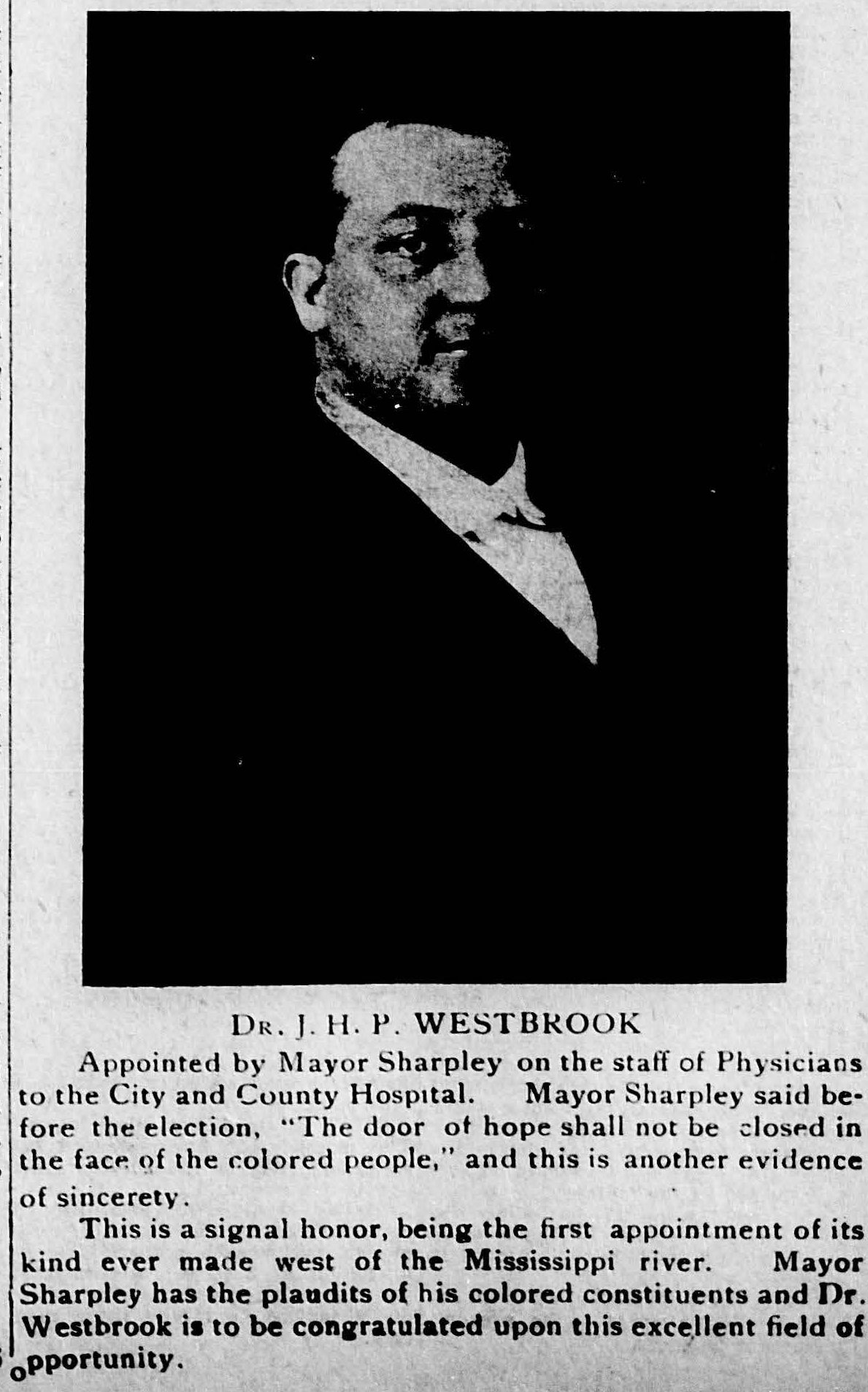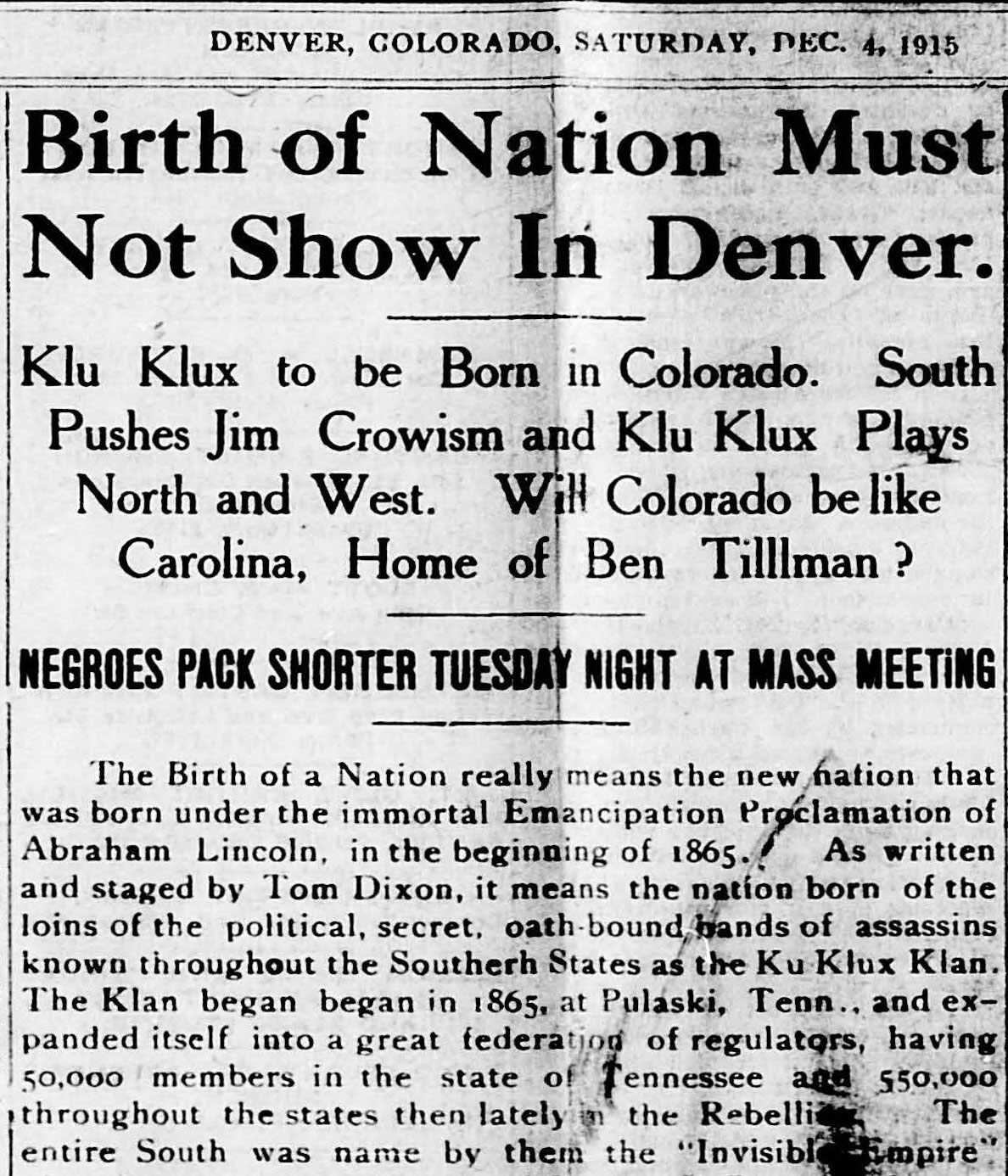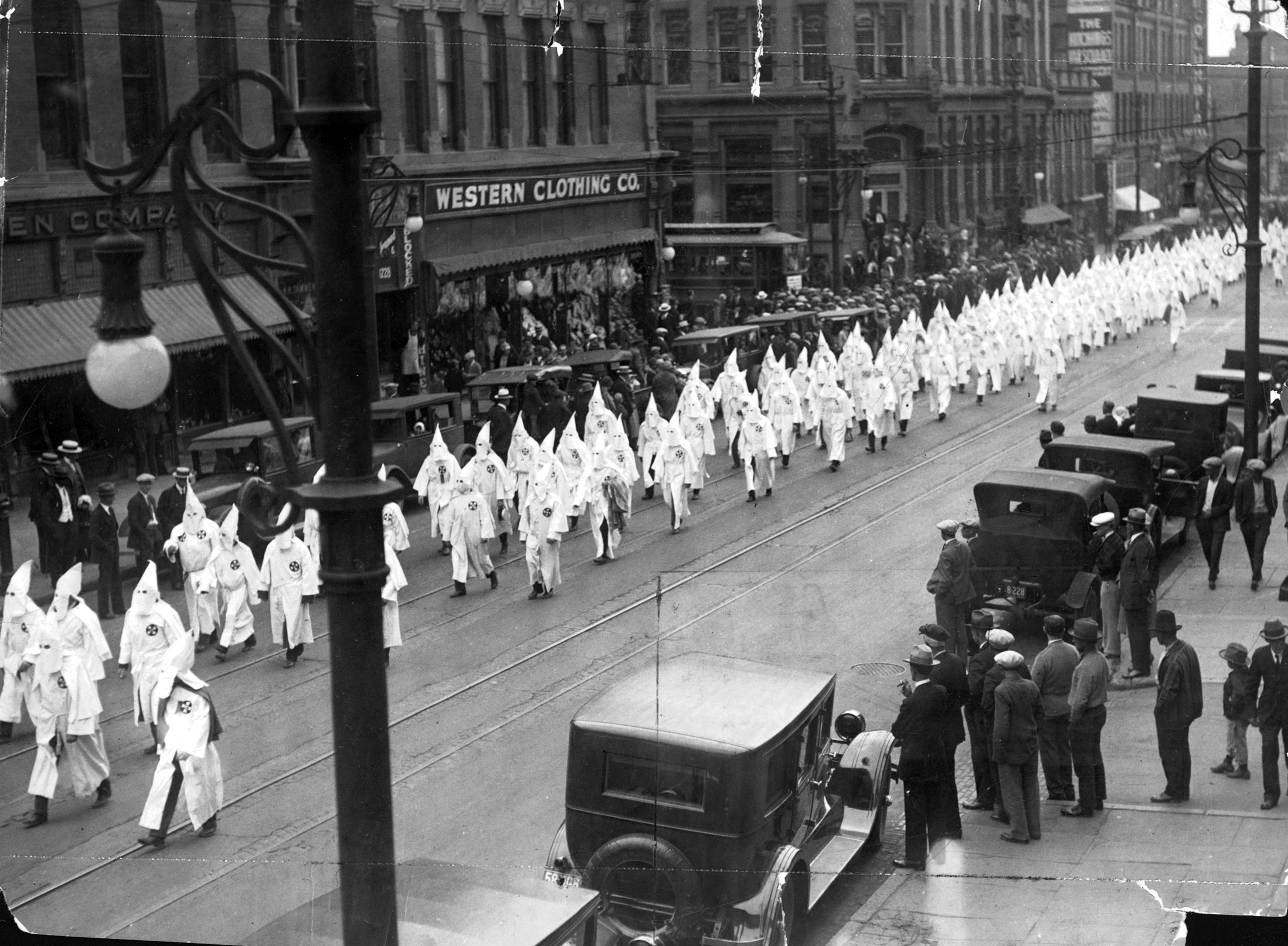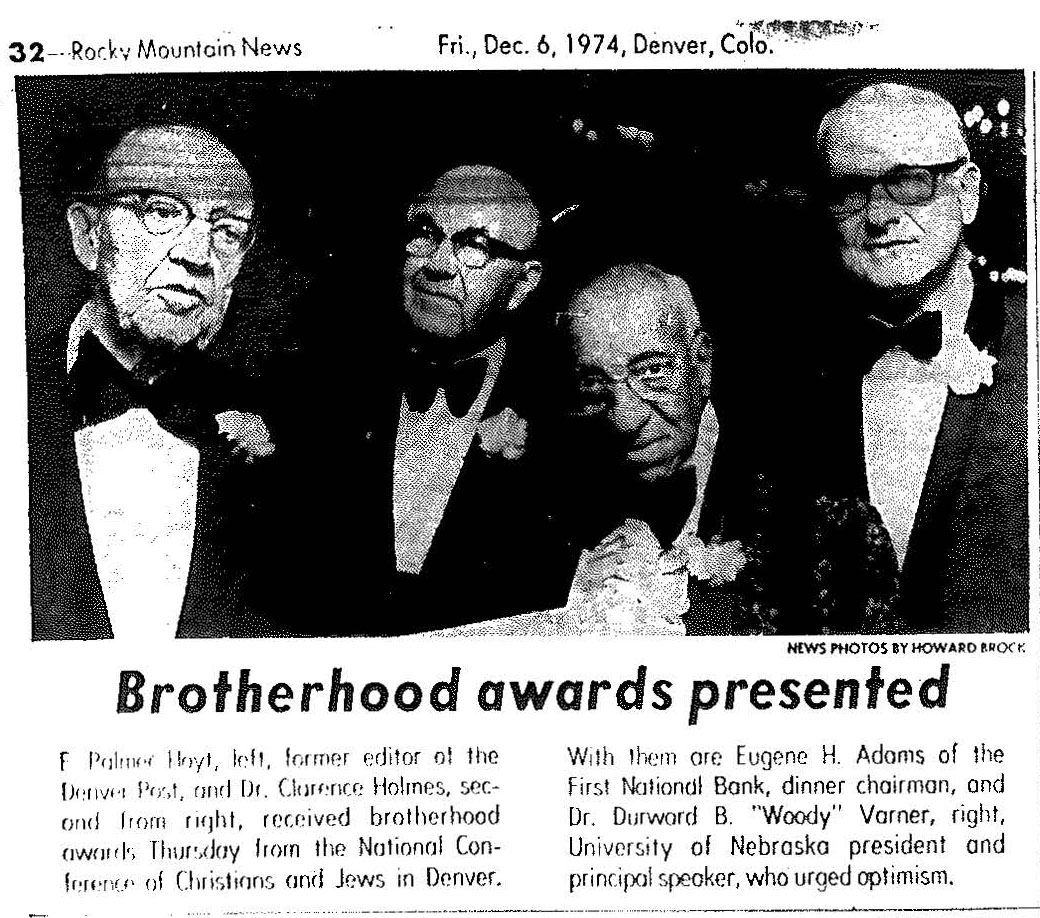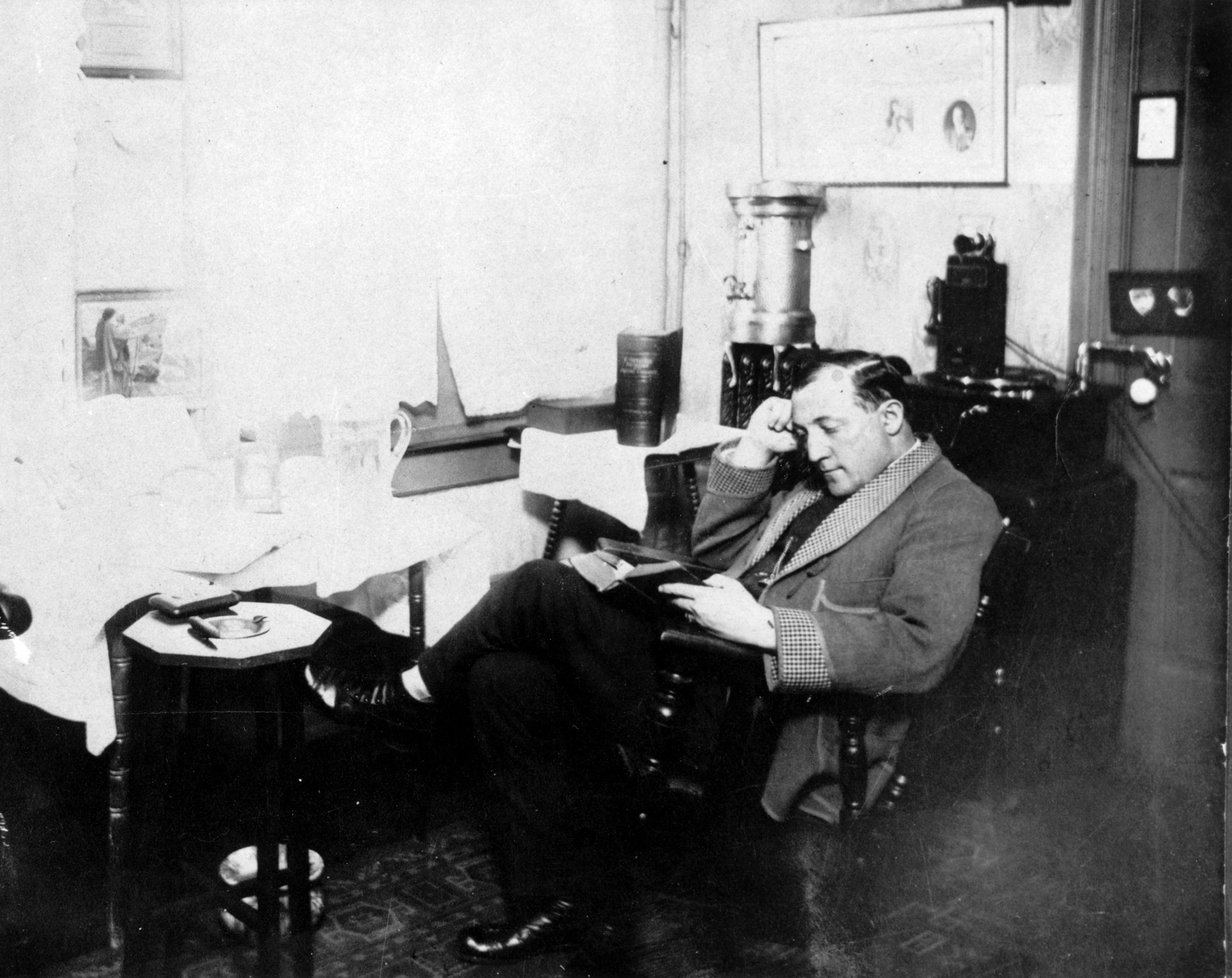Story
Two Men Who Helped Pave the Way for African American Activists in Denver
Holmes, Westbrook, and Activism Before the Age of BlacKkKlansman
In light of Black History Month and the ongoing struggle for racial equality, it seems fitting to explore Denver’s rich history of African American activism. Although Denver is not commonly associated with civil rights activism, black Coloradans have long been active participants in the struggle against racial oppression. This was no less true during the first half of the twentieth century.
Early African American Activists in Denver
After attending medical school, Dr. Joseph Henry Peter Westbrook moved to Denver in 1907 to practice medicine. He quickly became one of the most prominent African American citizens in Colorado, serving as an officer of Denver’s Interracial Commission, a member of the YMCA Board of Directors, a member of the NAACP, a delegate to the Republican National Convention, and a Sunday school superintendent. At one point risking his own life for the betterment of people of color across the state, Westbrook made a name for himself as one of the most impactful activists in early-twentieth-century Denver.
One of Westbrook’s associates, Dr. Clarence Holmes, was also a prominent figure in African American activism in Colorado. After completing his degree at Howard University College of Dentistry, Holmes returned to his hometown of Denver to practice dentistry. Witnessing racial discrimination, segregation, and the increasing prevalence of the KKK, Holmes established the Denver Interracial Committee in 1916. He also helped to establish a local branch of the NAACP with the assistance of Westbrook and other local African American activists.
Efforts to improve the lives of black Coloradans were not restricted to Holmes and Westbrook. The Denver Star, Denver’s preeminent African American newspaper, recognized the growth of anti-black racism in Colorado and across the country during the 1910s. The growing popularity of the KKK, for instance, was influenced by the hit 1915 film, The Birth of a Nation. Taking note of this, writers at the Denver Star criticized the film’s depiction of Klansmen as noble Americans.
In reference to the Ku Klux Klan and The Birth of a Nation one writer for the Denver Star newspaper asked: “Will Colorado be like Carolina, home of Ben Tillman?” Citing The Birth of a Nation and Ben Tillman (a southern senator and avid white supremacist), writers for the newspaper were concerned that, following the logic of the film, white Coloradans might be susceptible to the philosophy of the KKK, leading to further discrimination and segregation.
The journalist argued that if white children see the film, “they will not want to sit by [black students] in school nor will they want to be in the same room with such criminal beasts." In light of this threat, the journalist strongly urged against screening The Birth of a Nation in Denver. Indeed, the Denver Star was right to be concerned about the souring of race relations in Colorado.
A Call to Action
Despite the efforts of Holmes, Westbrook, and the Denver Star, the battle for equality did not yield immediate results in Denver. To the contrary, race relations deteriorated in Colorado in the 1920s. This must have been painfully clear when, in 1926, hundreds of Klan members marched down Larimer Street in robes and hoods. By the middle of the decade the political influence of the Klan in Colorado was outrivaled by only one other state in the nation (Indiana).
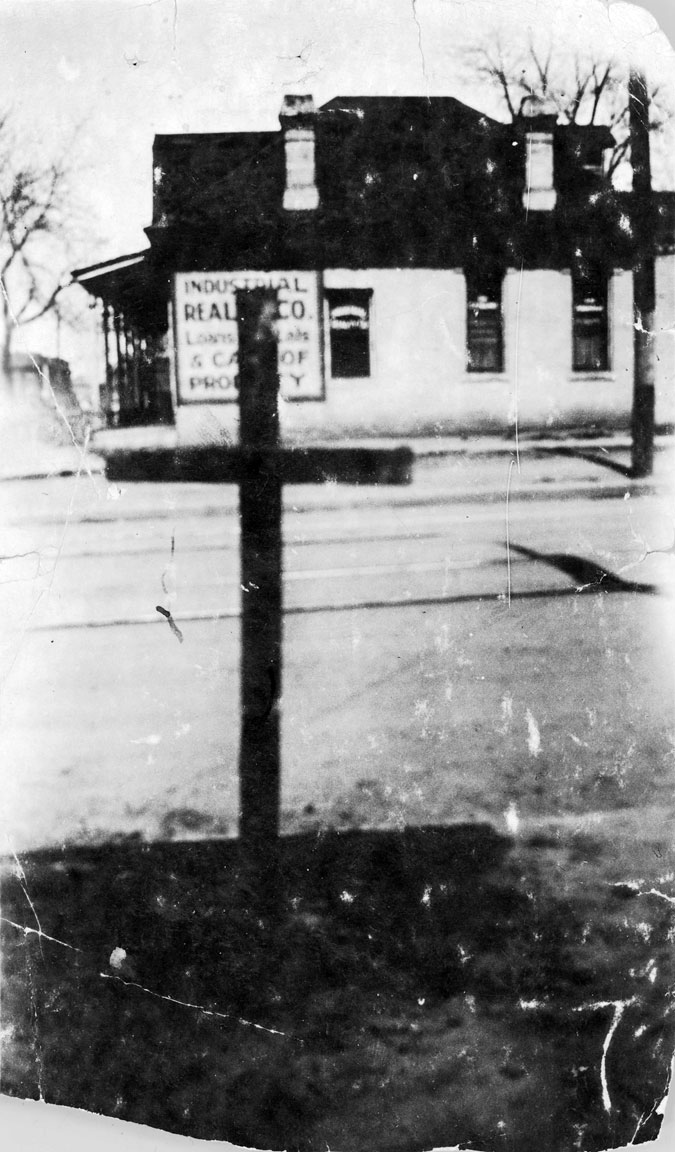
Clarence Holmes made this photograph of a cross burned on his lawn by the KKK in 1925.
The Klan increasingly targeted Denver’s Five Points neighborhood, home to the majority of the city’s African Americans at the time. In one instance, Klansmen actually burned a cross in front of the house of Dr. Holmes. Moreover, Five Points remained the only hospitable neighborhood for African Americans, as they were forbidden from using public facilities throughout the rest of the city. Considering Denver’s inhospitality to African Americans, Holmes, Westbrook, and other activists quickly realized the need for further activism in the 1930s.
Predictably, Westbrook heeded the call to action. In perhaps his greatest claim to fame, he infiltrated the local chapter of the Ku Klux Klan. As a light-skinned African American, Westbrook joined the Klan in order to notify black Coloradans about the hate group’s impending plans. Risking his own life, he sought to protect Denver’s black population at all costs.
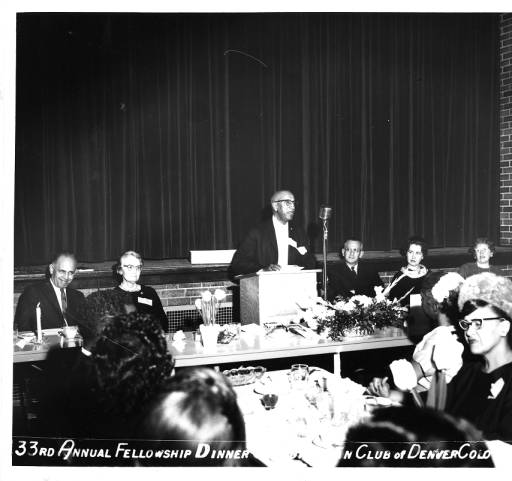
Clarence Holmes at Cosmopolitan Club event, 1964
In reaction to mounting racial tensions, Holmes established yet another organization aimed at improving the lives people of color in Colorado: the Cosmopolitan Club. With a motto that stated “Humanity above Race, Nationality, and Creed,” the organization was dedicated to building relationships among Denver’s diverse communities. In light of this, club members represented an array of groups in Denver, including African Americans, Anglo Americans, Japanese Americans, and Jewish Americans. Holmes led the group as president for more than thirty years.
Living Legacies
While the achievements of Holmes and Westbrook during their lifetimes must not be forgotten, it is equally important to note their impact on younger generations of activists.
As evidenced by his involvement with the Cosmopolitan Club, the NAACP, the Red Cross, and the Salvation Army, Holmes remained politically and socially active throughout his life. After nearly a century of activism, Holmes died in March of 1978.
Despite his death, Holmes’ legacy remains relevant. Like Holmes, modern activists continue to see the value of alliances that transcend lines of race, gender, religion, and sexual orientation. Denver’s annual Womxn’s March, for instance, is not merely intended for women. In an effort to “listen to those who have been silenced,” the 2019 rally featured non-binary and transgender participants. As Holmes realized when he created the Cosmopolitan Club in 1931, it was—and it continues to be—crucial to unite activists with different causes and backgrounds.
Similar to Holmes, Westbrook’s activism continued until his death. Although specific information about his infiltration of the Ku Klux Klan is relatively sparse, he remained a clandestine Klan member for a number of years. All the while, he continued alerting the African American community about impending cross burnings, bombings, and other threats.
According to his family members, extreme stress resulting from his courageous involvement with the KKK likely impacted his health. Following his speech at a conference in the Shorter African Community Church in 1939, Westbrook unexpectedly died of a heart attack upon returning to his seat.
Westbrook’s infiltration of the Ku Klux Klan might sound strikingly familiar to some readers. As depicted in Spike Lee’s Oscar-winning 2018 film BlacKkKlansman, Ron Stallworth—Colorado Springs’ first African American police detective—successfully infiltrated the KKK decades after Westbrook. In a more recent occurrence, Theo Wilson, an African American activist from Denver, went undercover as a white supremacist to expose the racist ideologies of the Alt-Right movement.
Whether or not Stallworth and Wilson were aware of Westbrook’s actions in the 1920s and 1930s, it is clear that Westbrook’s activism paved the way for African American activists in Colorado nearly one hundred years later.
Sources:
“From Five Points to Struggle Hill: The Race Line and Segregation in Denver.” Colorado Heritage, Autumn 2005, 28–39.
Meier, White J. “The Birth of a Nation Flayed.” Denver Star, vol. 26, no. 115, December 4, 1915.
“Meet the secret society that infiltrated Denver’s Ku Klux Klan during the height of its power,” by Kevin Beaty. Denverite, February 8, 2017.
“Dr. Joseph H. P. Westbrook, early Denver civil rights activist.” Fairmount Heritage Foundation, June 6, 2016.

